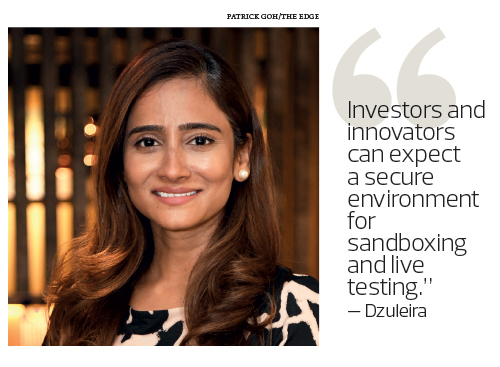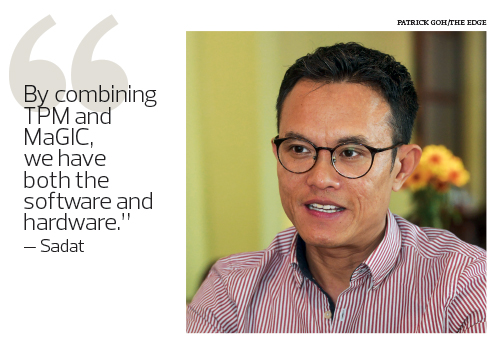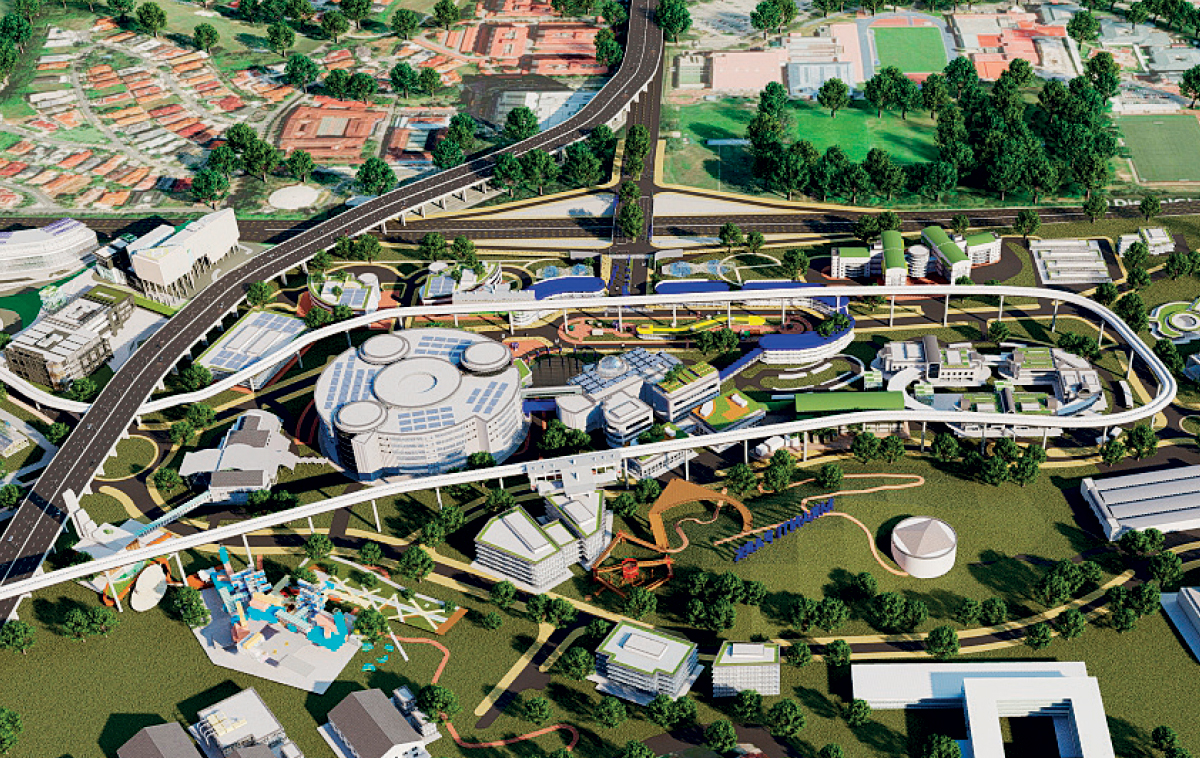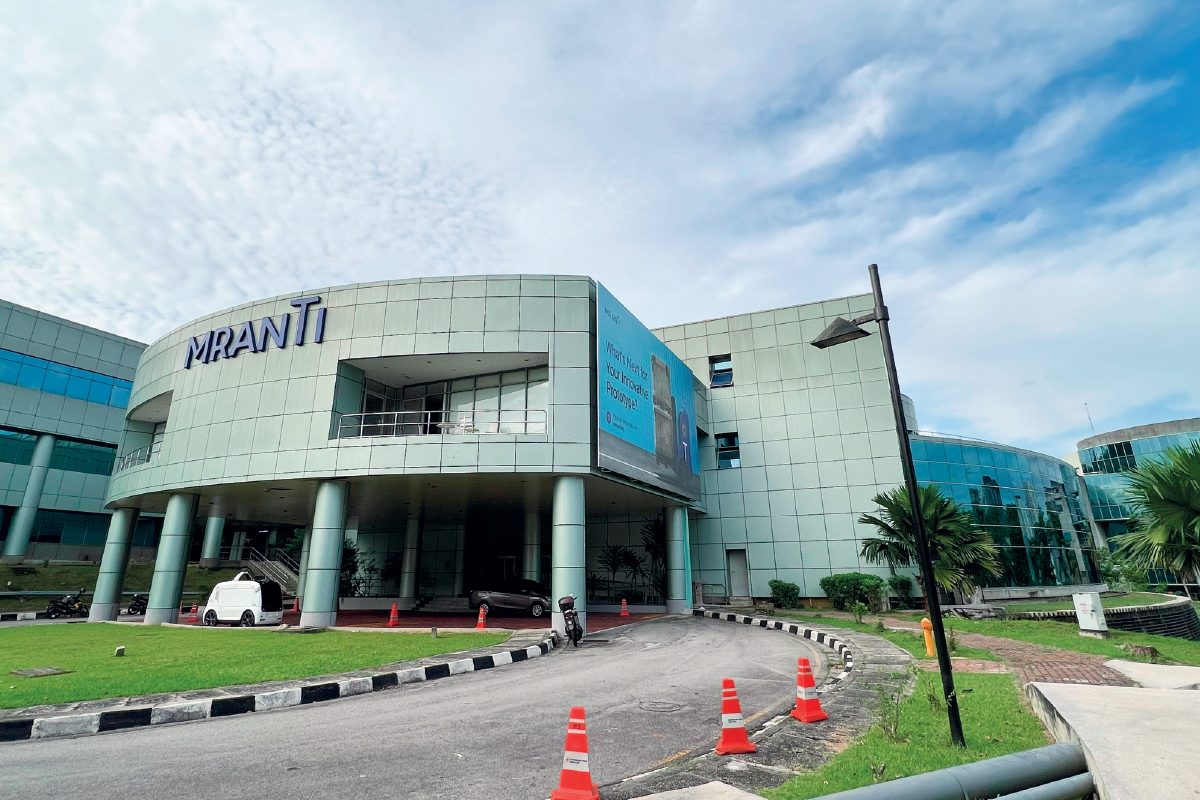
This article first appeared in City & Country, The Edge Malaysia Weekly on May 22, 2023 - May 28, 2023
Technology Park Malaysia (TPM) in Bukit Jalil, Kuala Lumpur, was established in 1995 as a science park that provided support services, technology as well as research and development (R&D) capability for the growth of science, technology and innovation in the country.
In 2021, the Ministry of Science, Technology and Innovation (Mosti) merged TPM and the Malaysian Global Innovation and Creativity Centre (MaGIC) into a single agency called Malaysian Research Accelerator for Technology (MRANTI) to focus on accelerating innovation and tech commercialisation.
MRANTI is the country’s central commercialisation agency under Mosti. According to CEO Dzuleira Abu Bakar, it enables Malaysian R&D to be more mission-focused — from ideas to impact — and, therefore, drive a greater return.
Its name is inspired by the yellow Meranti, the world’s tallest tropical tree found only in Malaysia, as the park strives to become the strongest and tallest among the world’s best.
Dzuleira adds that MRANTI works with academia, researchers, corporate innovators, enterprises and the government to stimulate commercialisation of demand-driven R&D; increase connections through mutually beneficial partnerships; develop pragmatic and viable innovations to meet industry and societal demands; and provide technology incubation and testing facilities to take innovations to market.
The 686-acre MRANTI Park is now a 5G-enabled fourth Industrial Revolution (4IR) innovation hub to facilitate this journey.
Place of collaboration
In an interview with City & Country, Dzuleira notes that MRANTI Park will be a place where the research community congregates, bringing academics, scientists, entrepreneurs and corporations together for collaboration.
“Today, various programmes and facilities are available — starting with MRANTI Park, which is being developed in three phases on three development precincts for five clusters, which are greentech, biotech, smart manufacturing, agritech and 4IR technologies,” she says.
The three precincts are the Learning and Creative Media Precinct, Innovation Gateway Precinct and Living Lab Precinct. Dzuleira explains that the 225-acre Learning and Creative Media Precinct hosts creative and education institutions such as Astro and Asia Pacific University, while the 128-acre Innovation Gateway Precinct will host MRANTI’s headquarters and function as a major incubation space.
The Living Lab Precinct (311 acres) will be developed for drones and unmanned aerial vehicles as well as an integrated healthtech hub, a hyperscale data centre, bio- and agri-tech hub and smart manufacturing. The remaining land area will be developed with required infrastructure and utilities.
“Investors and innovators can expect a secure environment for sandboxing and live testing as they progress from ideation to prototype to commercialising their product all in one place, for upstream and downstream activities,” says Dzuleira.
She adds that the refurbished technology park is positioned to attract young professionals, as well as create a stable funnel for highly skilled talent, with features and perks such as high-speed broadband and 5G technology, universities or research-intensive institutions, as well as incentives and funding opportunities.
Upgrading the infrastructure
MRANTI chief land officer Khairil Anuar Sadat Salleh notes that the merger between MaGIC and TPM means the network of start-ups and entrepreneurs from MaGIC can use the laboratory and office space in MRANTI Park.
“By combining TPM and MaGIC, we have both the software and hardware. The [park] will be designed according to the needs [of the tech industry] ... We have a space to test drones and we even have data centres. It is a one-of-its-kind development serving various segments in the technology industry. We are looking forward to redeveloping this piece in the next five to 10 years,” Sadat says, adding that half of the 686 acres has been developed and occupied.
He explains that the park is owned by the Federal Lands Commissioner and MRANTI leases the land for 99 years. It then subleases the land to a third party. MRANTI Park is also the only technology park with the technology park zoning, under Kuala Lumpur City Hall.
“We are not selling the land. There are questions about whether this model is viable because, from the real estate perspective, people are looking at ultimate ownership. But, there are companies looking for the asset-light approach. Not every company is looking for ultimate land ownership,” Sadat says.
“For the past year, there were companies that came to us, mentioning that their interest is to be in this country for 30 years because of the volatility in the market, business strategy and business expansion plan. It is easier for them to move out of the country without any liability, and they see real estate as a liability rather than an asset. We shifted our focus to cater for this segment and the majority of these companies are technology companies because they move fast,” he says.
Sadat believes MRANTI Park will be the playground for all technology players in the next five years. The demand, he says, comes mostly from multinational corporations (MNCs) and foreign companies that have particular requirements for power supply and infrastructure.
The location of MRANTI Park is the main attraction for the companies. Sadat says: “[While the] first location they will think of is Cyberjaya, they are also looking for an alternative. In Bukit Jalil, we are surrounded by mature neighbourhoods and we are very central, pretty much 30 minutes from everywhere. There are many amenities and we are well connected by public transport and highways. There is also a good supply of residential and commercial developments in the immediate areas.”
Since the merger in 2021, MRANTI has spent a year replanning the park. Sadat’s priority is to beef up the infrastructure works, especially because the park was developed more than 20 years ago.
“We are looking to ramp up the infrastructure, such as water, power and telco lines. It is our priority. We have spoken to providers and we have reached agreements with them. For example, the power supply will increase from 25mw to 500mw.
“Also, the first building in TPM was built in 1996 and a lot of upgrading [work] will be done as well. We will rejuvenate the buildings to match what is coming. We are fine-tuning the master plan and aim to embark on the physical construction of new infrastructure as well as upgrade the existing buildings and infrastructure by the third quarter or latest by the fourth quarter this year,” Sadat says.
Currently, the total net lettable area of MRANTI-owned buildings in the park is 5.07 million sq ft, of which almost 80% has been occupied. Its tenants include those in the information and communications technology, biotech and engineering businesses.
Meanwhile, the infrastructure works will be completed in about three years, or by end-2026. MRANTI will also bring in companies with the infrastructure lined up according to their requirements.
“By 2027, based on our projection, all the land will be taken up, but the physical construction will be in stages. In a nutshell, we are looking at a maximum of 10 years from now for all components to be completed,” Sadat says.
Components of the park
As MRANTI plans to make the park a lively and fun space for the tech industry, it will feature a modern working environment with scooters and hangout places. Therefore, there will be no shopping and residential components in the park. As Sadat puts it, MRANTI Park is a place to work and play, and surrounded by mature developments and amenities.
The more than 300 acres of remaining land in MRANTI Park will be divided into clusters for IT, healthtech, artificial intelligence (AI), drones and a data centre. Sadat believes that gathering like-minded people in one place will build communities within the park, which will mean more collaboration, thus benefiting the tech industry.
“When we talk to companies, there is a mismatch between needs, requirements and expectations,” Sadat says. “Say, you are involved in the R&D of vaccines. There are several issues here: Who will provide the lab; to whom should you sell the vaccines; who should validate the products and so on? There is a need for the ecosystem, which may include a data centre [to obtain data for R&D]. [With the cluster to include every aspect of technology], they can talk to each other, as they are surrounded by like-minded people.”
In the healthtech industry, there will also be an AI hospital, aged-care facility, space for prototype development and testing as well as a recuperation centre.
“We won’t pretend we know everything about healthtech, so we are getting experts to do it. The hospital will be high-tech, niche and specialised. There will also be spaces for prototypes because there is a huge demand from the healthtech industry for items such as wheelchairs, hospital beds and equipment. They have direct access to the hospital to test the products,” Sadat says.
“We are bringing everyone in so they can benefit each other. We are expecting aged-care related businesses and we have a recuperation centre for step-down care.”
In addition, there is a plan to build event spaces and hotels in MRANTI Park to complement the two auditoriums in existing buildings.
The drone cluster will have a drone centre; and the smart manufacturing cluster will cater mainly for prototypes, R&D and product testing.
There will also be an overhead structure for a micro-mobility transport system, akin to a mini bus rapid transit, for easy access within the park.
Even though MRANTI Park is located in a mature area, Sadat sees a good population of wild boar and migratory birds. There is a wetland park, which occupies about 20 acres, that provides a habitat for these species.
“The wetland park is open to the public and we are managing it. This is a way we address the ESG [environmental, social and governance] component as well. We have auxiliary police patrolling the park 24/7. We hope to build a bridge across [the Bukit Jalil Highway] for easy accessibility to Bukit Jalil Recreational Park and Pavilion Bukit Jalil,” he says.
Making an impact
Dzuleira hopes MRANTI Park will be the place where innovation can be fast-tracked to make an impact on society. “Our goal is to create impact so these can be recognised, appreciated and celebrated not only in Malaysia but all over the world.”
According to the MRANTI Park Master Plan launched in 2022, MRANTI Park is estimated to have a gross development value of RM20 billion with returns from land leases valued at RM2.8 billion. She notes that the master plan is an important bridge for transition and a successful model for domestic and foreign cooperation, and it will adhere to long-term design and planning for MRANTI Park to be systematic and well-developed according to the United Nations’ Sustainable Development Goals.
“We believe the implementation of the master plan will boost the influx of domestic and foreign investors (for domestic and foreign direct investment), talent and technology development, as well as research and commercialisation activities from the public and corporate sectors that will be more focused and centralised. MRANTI will also introduce various measures in the near future as it aims to create 8,000 jobs,” Dzuleira adds.
“There are plans to develop connecting areas [in MRANTI Park], but this is still under review for the longer term. We want to first demonstrate capabilities and both return on investment and return on impact at MRANTI Park from now until 2030.”
As the first-of-its-kind technology park with a sublease model in the country, MRANTI Park is in the spotlight as it is slated to change the tech industry and add more vibrancy to Bukit Jalil.
Save by subscribing to us for your print and/or digital copy.
P/S: The Edge is also available on Apple's App Store and Android's Google Play.








